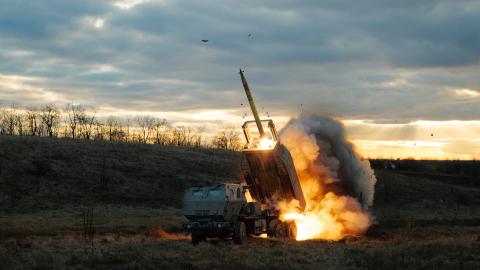Beyond halting Russia, American political and military support for Ukraine plays a crucial role in preventing China from escalating its aggression against Western democracies. The recent approval of a supplemental aid package by the US Congress and President Joe Biden represents a significant stride in fortifying Ukraine’s defense against Russian aggression. However, this assistance primarily serves as a stopgap measure, addressing a long-standing supply deficit that has hindered Ukraine’s ability to counter Russian forces effectively.
While the military supplement package is undoubtedly beneficial, it falls short of grappling with the deeper strategic complexities of the conflict. The war in Ukraine is not merely a matter of tactical engagements. It is a multifaceted struggle that demands a comprehensive approach.
The cyclical nature of military aid inadvertently creates vulnerabilities. As obstacles arise—whether due to domestic political debates, bureaucracy, or logistic challenges—a new gap in Ukraine’s defense could emerge. With each step forward, Russian forces entrench themselves deeper into Ukrainian territory, making subsequent efforts to reclaim lost ground more resource-intensive and costly in terms of human lives. Russia has already switched to an exhaustion strategy that is too costly for Ukraine.
While the current rate of military aid may bolster Ukraine’s defense, it is unlikely to afford Ukrainian forces the opportunity for a counteroffensive or strategic initiative that can secure victory. As the North Atlantic Treaty Organization (NATO) Summit in Washington looms, the prevailing stance in the US and Europe is to persist in providing life support for Ukraine, yet refrain from confronting Russia, the root cause of Ukraine’s tragedy. This approach affords the Kremlin increased confidence and time to adapt its war economy.
By choosing political passivity and refraining from adopting a counter-offensive stance against Russia, Western democracies are gradually ceding their global influence. The strategic choice—or, more accurately, the strategic indecisiveness—to remain in a passive-defensive mode against Russia extends beyond the relationship between Western democracies and Russia. The war in Ukraine is but a single theater in a much larger conflict—a third world war, to be blunt—where the free world is pitted against authoritarian regimes. China, Iran, and North Korea already emerged as major supporting actors on Russia’s side, fully cognizant that their fight is not against Ukraine, but an indirect war with Western democracies.
For China, the war in Ukraine holds paramount importance. By supplying military components and dual-use technologies to Russia, and purchasing Russian oil and gas, China can gauge not only the effectiveness of economic sanctions on a large authoritarian state, but also the seriousness of the US and European countries in implementing full-scale isolation of the aggressor. This could be a pivotal factor in the future, particularly when assessing the impact of potential economic isolation from Western democracies towards China, for instance, in a scenario involving an assault on or blockade of Taiwan.
As one report indicates, China is already the largest single exporter of key military goods to Russia. This clearly reveals Beijing’s strategic posture on the war. Chinese communist leaders aim to defeat Western powers in Ukraine by exposing democracies as unable to compete with the authoritarian axis in terms of political will, efficient strategic decisions, and even by depleting the military reserves of NATO countries and the readiness of democratic societies to fight for democratic values.
Despite these challenges, the Biden administration persists in seeking dialogue with China, even with the knowledge that China attempts to “influence and arguably interfere” with the upcoming election in the United States. However, Secretary of State Antony Blinken’s recent visit to China demonstrated that Beijing does not seem inclined towards meaningful conversations with Washington. It appears that Chinese leaders already assessed the Ukraine-Russia war in terms of Western resolve to fight back. These conclusions bolster Beijing’s confidence that the US and NATO allies are too timid, too slow, and too preoccupied with domestic political issues to assert themselves against Russia.
The war in Ukraine is likely the initial phase of a much longer and more complex war between the US and China, as leaders of diametrically opposed blocs in the current global landscape. This initial phase could culminate in a victory for China if Western democracies fail to adopt a robust stance and enter a counter-offensive mode against Russia.
NATO must dissuade Russia that it fears the dubious escalation risk, a narrative heavily promoted by the Kremlin’s propaganda, to prevent genuine NATO membership accession talks with Ukraine. This would send an unequivocal signal that Russia is incapable of conquering Ukraine, regardless of the duration of their attempts. And Ukrainians, armed with military supplies from NATO, will do everything in their power to liberate the occupied territories from Russian control. This is the path forward for Western democracies to re-assert their global role and uphold democratic values.
Read the full article at Global Security Review.



















